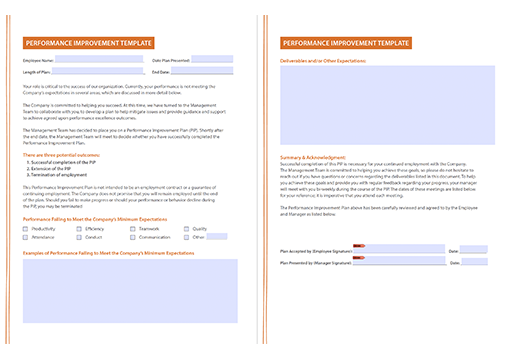Get a Free Performance Improvement Plan Template
There’s no way around it: sometimes, employees fall behind. But a performance improvement plan can help them catch up. Use this customizable PIP template to support your team’s career growth and keep turnover rates low.
Learn how to:
- Set clear expectations for the employee.
- Measure their performance both qualitatively and quantitatively.
- Create an action plan for everyone to follow.
- Stay compliant, whether they ultimately stay or go.











